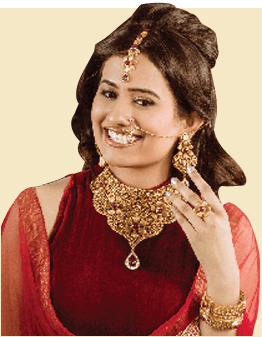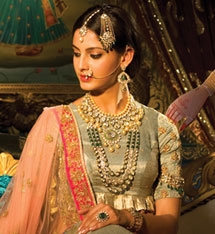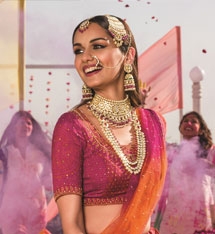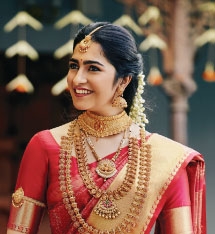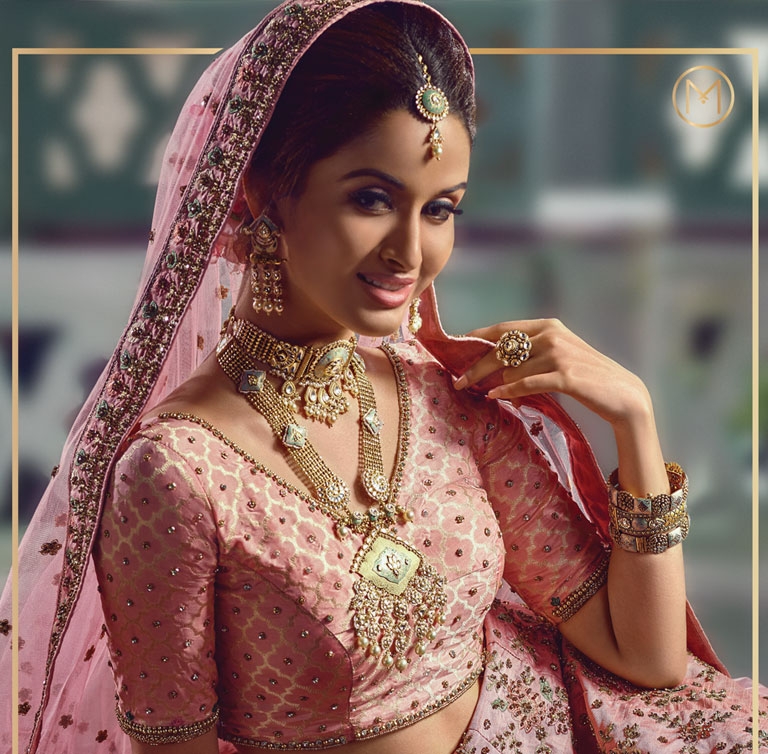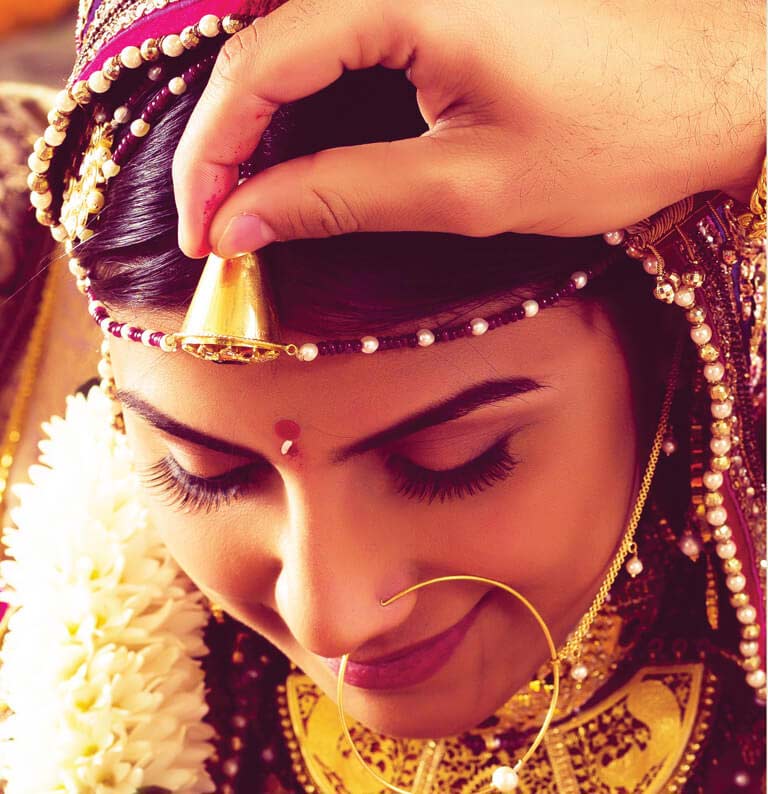-
Home2023 EditionEditionEditionCelebration brideCelebration BrideRoyal bride6Fashion brideFashion Bride
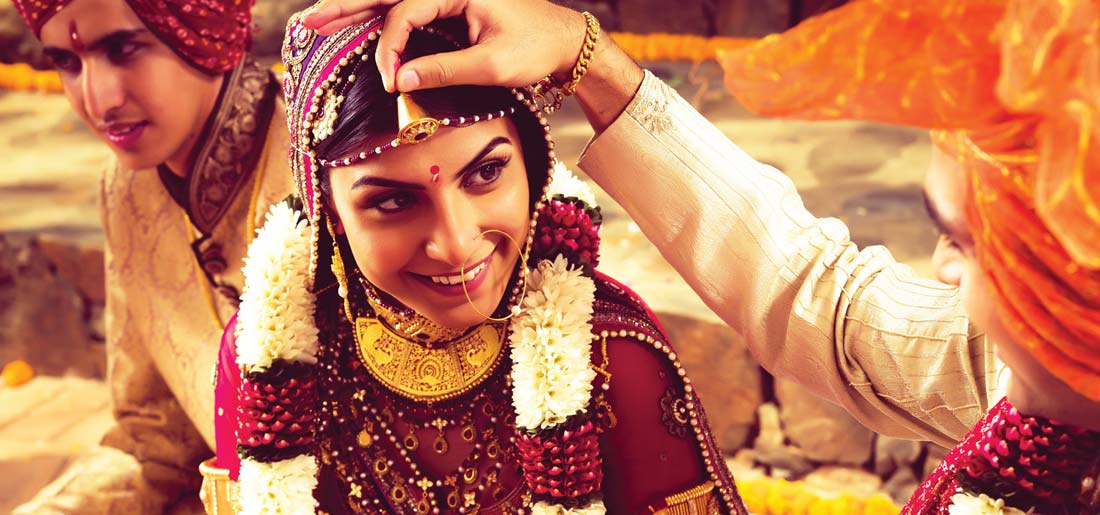


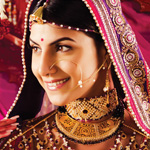
Rajasthani Rajput
- HOME
- West Indian Bride
- Rajasthani Rajput
BackRituals
The rituals and ceremonies in a traditional Rajasthani Rajput wedding
Before the wedding is organized, an engagement ceremony takes place which is called Tilak. The key male relatives of the bride visit the family of the groom and conduct an engagement ceremony. The brother of the bride places a ceremonial Tilak on the head of the groom and claims him as his future brother-in-law. A lot of gifts are exchanged, and the groom generally receives things like swords, clothes, and sweets. Following the Tilak ceremony, many orthodox families observe a tradition called Pithi Dastoor. According to this tradition, from the day of the engagement till the day of the wedding, the bride and groom are required to stay within their family homes, and not leave the premises. A lot of ceremonies are performed during this interval, and take up the time of the engaged couple as they eagerly wait for the day of the wedding.
The decorations of the wedding hall rival that of the bride, and the entire place is lit up in bright colours. The wedding ceremony is hosted by the family of the bride, and the groom arrives with his family and friends in a grand procession which is called a Baraat. Traditionally the groom arrives on top of a white mare, and despite a few instances where cars were used instead, most Rajput grooms prefer to ride the mare to the wedding instead. In case the wedding is between royalties, richly decorated elephants are used instead of mares. Amidst much fanfare, the procession arrives at the venue of the wedding, where the entire family of the bride is waiting to greet and welcome them.
Rajputs consider hospitality a matter of honour and will do anything to make sure that their guests are comfortable. The arrangements made for the baraatis are grand to say the least, and no cost is spared to ensure the utmost comfort of the groom’s family. When the wedding ceremony starts, the bride is escorted under a decorated canopy which is held up by swords on the four corners. The swords are in the hands of the male members of the bride’s family, which most commonly includes her father and brothers. The groom is welcomed with a fire ceremony known as Arti, after which he is led along with his family towards the mandap, the holy altar, where the marriage vows will be taken and the ceremony completed.
A string of elaborate rituals is performed at the mandap, starting with the Granthi Bandhan, and ending with the ceremonial walk around the fire, or the Saat Pheras. In Granthi Bandhan, a knot is tied between the dresses of the bride and groom, to signify that their fates and lives are now tied together. After this, the Kanya daan is performed, in which the father of the bride takes her turmeric layered hand and places them in the hands of the groom, thus signifying that he has blessed this union and now places her life in the hands of the groom. Once again a ceremony is performed to reinforce the fact that the groom must now protect and care for his wife with a ritual called Paani Grahan, in which he takes in his right hand, the hand of his bride. The saat pheras complete the wedding ceremony and the groom puts on some green bangles on the arms of her wife to call upon the gods for prosperity and opulence.
Many families also celebrate Mahira dastoor, in which the mama, or the maternal uncles of both the bride and groom arrive with their family and are welcomed with much fanfare and celebration. The mahira Dastoor is a way for the families to come together once again and spend some loving time in each other’s company, thus ensuring peace and cordial relations between the two families.
The farewell of the bride after the wedding ceremony is a very raw moment, and many tears are shed by her family. She is then escorted away to her new home by her husband, where she receives a grand welcome from her new family.
Useful Links Scheme Payment(India only)
Make an Appointment Build your Custom Jewellery Smart Buy Offers New Arrivals Exclusive CollectionCustomer ServiceMalabar Gold & Diamonds
402, Valecha Chambers, Plot No. B-6,
New Link Road, Opp. Infinity Mall,
Andheri (W) ,
Mumbai - 400053. +91 22 62300916 care.in@malabargoldanddiamonds.com





